Original Author:@auggest_crypto
Mentor:@CryptoScott_ETH
TL;DR
Metis, as the first Layer 2 network focusing on the development of the LSD track, has broken through the limitations that other Layer 2 networks cannot reach. Its unique decentralized sorter pool technology has created a staking demand, making LSD the most convenient and high-yield channel for community participation in decentralized construction.
LSD, as an important part of the POS mechanism network represented by Ethereum, reduces the network staking threshold, enhances network security, maintains coin price, stimulates asset liquidity, and plays a powerful and positive role in the derivative Defi ecosystem.
In order to vigorously develop the liquidity staking track, the Metis official has issued many ecological incentive plans such as MetisLSB, giving the LSD protocol a 20% annual mining yield, far exceeding Ethereum and other networks with only 4.25%.
Emerging protocols such as ENKI and Artemis have initiated community proposals, and their token economics and upcoming ecological activities will serve as important criteria for early airdrops, worthy of attention.
1. Metis LSD
1.1 Why LSD?
1) Reducing the high threshold of traditional staking
LSD, short for Liquid Staking Derivatives, is a derivative product of liquidity staking. After the Ethereum Istanbul upgrade shifted the public chain from POW to POS mechanism, on-chain nodes need to stake a certain amount of tokens to participate in the network, obtain block rewards and staking incentives. However, for ordinary users, participating in public chain staking is not easy.
Generally, the amount of tokens required for public chains is high. For example, Ethereum nodes require a minimum of 32 $ETH, leading to a high participation threshold. The staking period is long, and for retail investors, capital lock-up can lead to low efficiency. Staking also requires some technical and hardware requirements, which are not user-friendly.
After the Ethereum Shanghai upgrade, staking withdrawals were implemented, marking the beginning of LSDfi. LSD not only opens up new token income channels for ordinary users, unlocking staked asset liquidity, but also gives rise to a variety of LSDfi, Restaking, and other protocols, promoting the rapid growth and widespread participation of the Defi ecosystem.
As a Layer 2 network, Metis innovatively introduces the POS mechanism into the sorter pool, creating staking demand for $METIS. Shifting the network consensus security maintained by node staking to the decentralized sorter is the most important step for the realization of decentralization.
Metis, a truly decentralized Ethereum Layer 2 network, focuses on decentralized sorters, redistributes MEV and other gray income to the community, and becomes a transparent and user-friendly network. We detailed Metis's decentralized technology in this article, with the most important being its decentralized sorter pool for node staking.
Metis introduces multiple sorters to form a sorter pool, where any sorter staked has the right to see the transaction pool content and process transactions, preventing a single sorter from maliciously manipulating. Nodes must stake network token $METIS to participate in the network, and to become a sorter node, they need to stake at least 20,000 $METIS (worth about $2.4 million). However, once the sorter participates in transaction block generation, they can simultaneously receive gas income from processing transactions and additional $METIS staking incentives. Blocks are broadcasted based on the proportion of node staked shares.
In addition, becoming a Metis sorter not only allows for network and staking income, but in the official EDF plan, Metis will allocate 3 million out of 4.6 million $METIS to achieve the decentralization of sorters. It is evident that the Metis official attaches great importance to decentralized sorters, but ordinary users who want to participate must face a staking threshold as high as $2.4 million, which is daunting.
LSD provides a channel for users to participate in staking with a small investment, greatly reducing the participation threshold.
2) Enhancing network security and maintaining coin price
Why stake assets towards the community? For public chains with POS mechanisms, the security of the network largely depends on the degree of decentralization of node staking.
If staked assets are concentrated in the hands of a few nodes, they have enough power to manipulate the network, leading to centralization risks. Conversely, if the network's staking participants are numerous and decentralized, the influence of a single node on the network will be reduced, increasing the cost of any potential malicious behavior, as attacking the network would require controlling more nodes.
Although there was a short-term large withdrawal of $ETH staking after the Ethereum Shanghai upgrade, in the long run, the total locked amount of ETH has seen considerable growth. Users moved withdrawn funds to the LSD protocol, allowing for staking while enjoying asset liquidity and flexibility, also increasing the staking rate of Ethereum, maintaining network consensus, and thus improving network security and stability.
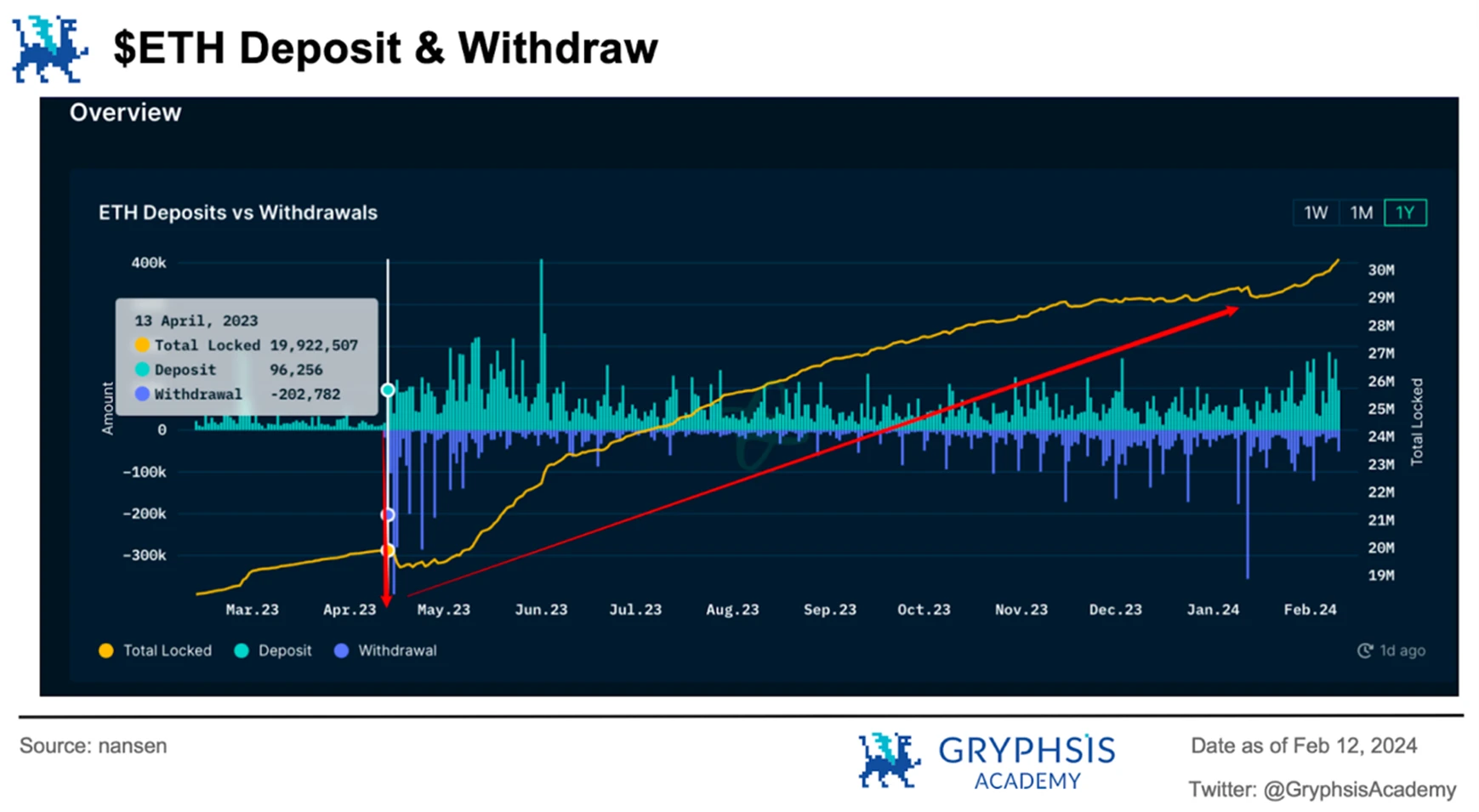
It is evident that the launch of LSD has made Ethereum's network staking accessible to more retail investors, making the Ethereum network increasingly secure with more tokens participating in staking. At the same time, staking reduces the market liquidity of $ETH, controlling the supply to maintain/boost the token value.
3) Improving capital efficiency and promoting the Defi ecosystem
As an important part of Ethereum, LSD currently has a TVL of 37.96 billion, accounting for 35% of the total TVL of Ethereum. Leading protocols such as Lido and Rocketpool provide high-standard, multi-functional liquidity staking, driving the development of other LSDFi, Re-Staking, DVT, and other niche tracks.
A complete liquidity staking ecosystem makes $ETH assets more easily tradable, stimulating new gameplay in the Defi ecosystem. For example, users can further use the tokens obtained from staking in scenarios such as lending, market making, and farming, greatly improving the efficiency of originally locked-up capital.
LSD attracts more users and capital to enter the Defi ecosystem by providing liquidity and innovative financial products, thereby stimulating the economic growth of the entire ecosystem.
It is evident that the development of LSD is crucial for networks with the POS mechanism, as it is an important step in maintaining network consensus and promoting the circulation of ecological capital. Metis has also provided rich and comprehensive incentive plans to stimulate the liquidity staking track of this ecosystem.
1.2 Ecological Incentive Plan
1.2.1 MetisLSB
Metis launched the LSB plan (Liquid Staking Blitz) on February 8, focusing on helping Metis become the first Rollup with a decentralized sequencer and sharing sequencer income with the community.
From the 4.6 million Ecosystem Development Fund (MetisEDF), the official will extract 3 million $METIS to accelerate the deployment and development of the LSD protocol. The selected protocol will have the right to be paired with a Sequencer node and will provide a 20% MRR (Mining Reward Rate) mining incentive for the first year.
As mentioned earlier, becoming a Metis sequencer allows for simultaneous receipt of gas income from processing transactions and additional $METIS staking incentives when participating in transaction block generation. The tokens obtained by the LSD protocol from the community also have the right to be paired with sequencer nodes and receive a 20% mining reward rate.
Compared to the staking reward rates of other POS mechanism networks, Ethereum has only 4.25%, Solana has 7.25%, and Celestia has 14.8%. Looking specifically at the Ethereum ecosystem, apart from the recent popular API3, only Metis has the highest reward rate, with the rest being below 10%.
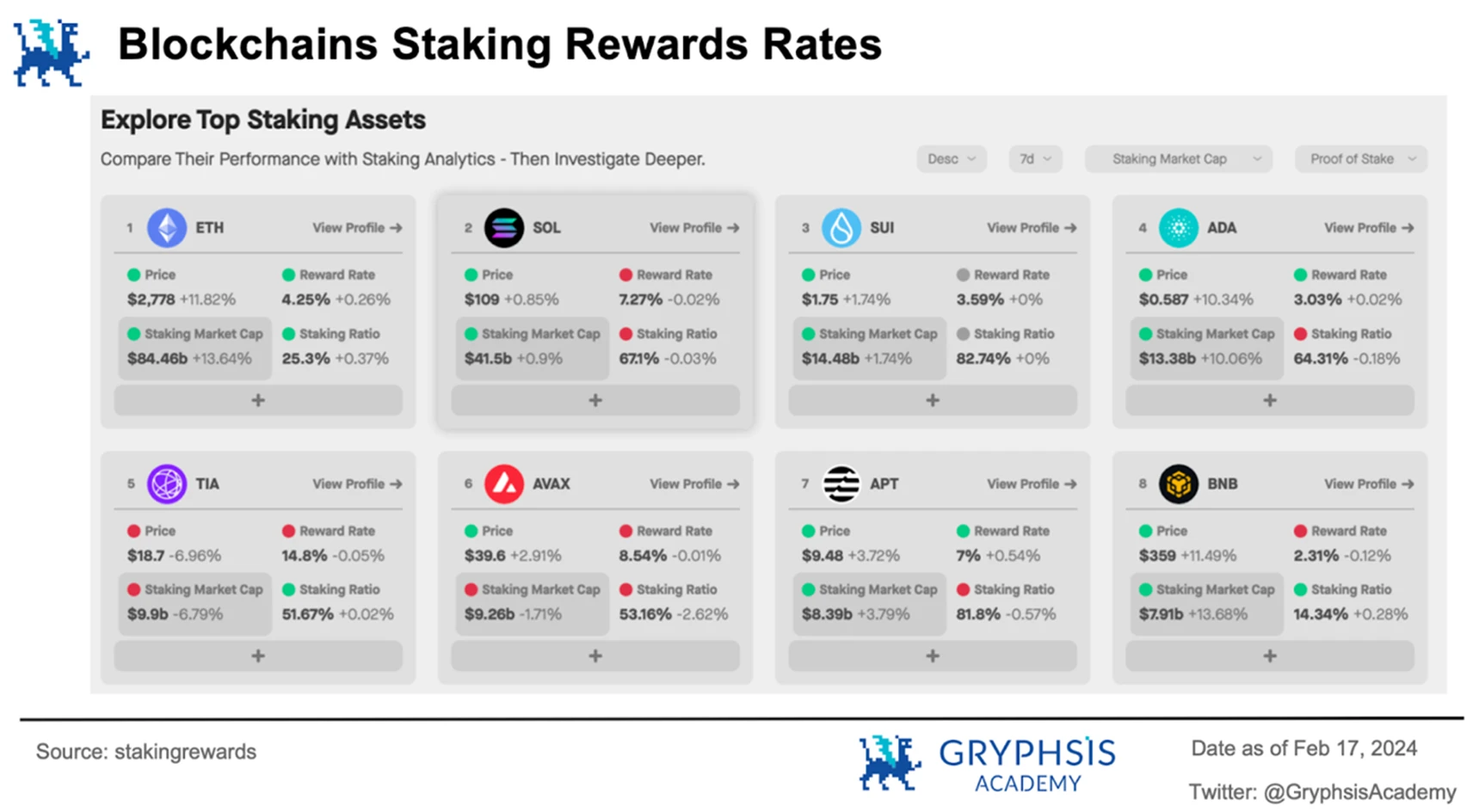
By integrating sequencer mining and the ecological fund, Metis LSB provides income incentives for LSD products, amplifying the returns of liquidity staking. This not only attracts more users to participate in decentralization but also expands derivative products related to staking, including re-staking, to activate asset circulation while achieving network expansion.
1.2.2 MetisEDF & Journey
On December 6, Metis provided a $5 million incentive plan #MetisJourney for the Defi category to incentivize and attract more related Dapps deployments.
On December 18, Metis launched the #MetisEDF (Ecosystem Development Fund) plan, allocating 4.6 million $METIS (valued at $5.5 billion) from the ecological fund to achieve decentralized Sequencer implementation, Dapps Grants, Dapp Building mining incentives, liquidity incentives, and other ecological development activities.
It is explicitly stated that 3 million $METIS will be allocated from the EDF for sequencer mining to ensure network functionality and decentralization. The remaining 1.6 million $METIS will be used to attract more LSD protocol deployments, including lending, stablecoins, and CDP, among other ecological developments.
On February 16, it was confirmed that 250,000 $METIS will be extracted from the EDF as the 2024 Grant Pool, with 23K already claimed.
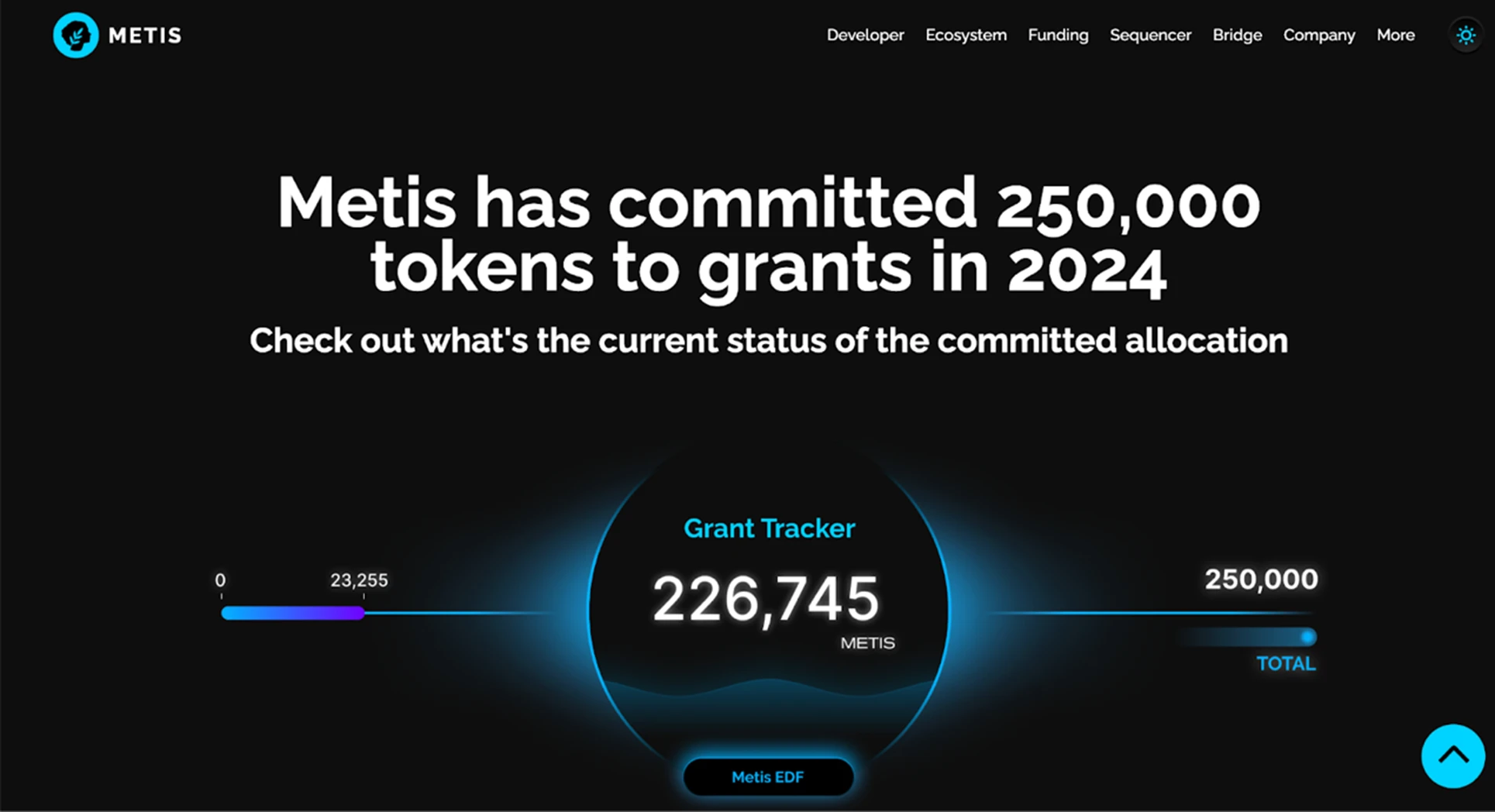
Source: https://www.metis.io/grants
As of now, Metis has provided billions of dollars in incentive plans, providing new impetus for the integration of new assets, products, and platforms, providing strong support for the decentralized development of the network and asset liquidity.
The LSD protocol's community proposal voting is now open. Combined with the LSB plan, we can anticipate that participating in these elected protocols will allow for high mining rewards. So, what specific protocols are there?
2. Alpha Protocol
2.1 ENKI
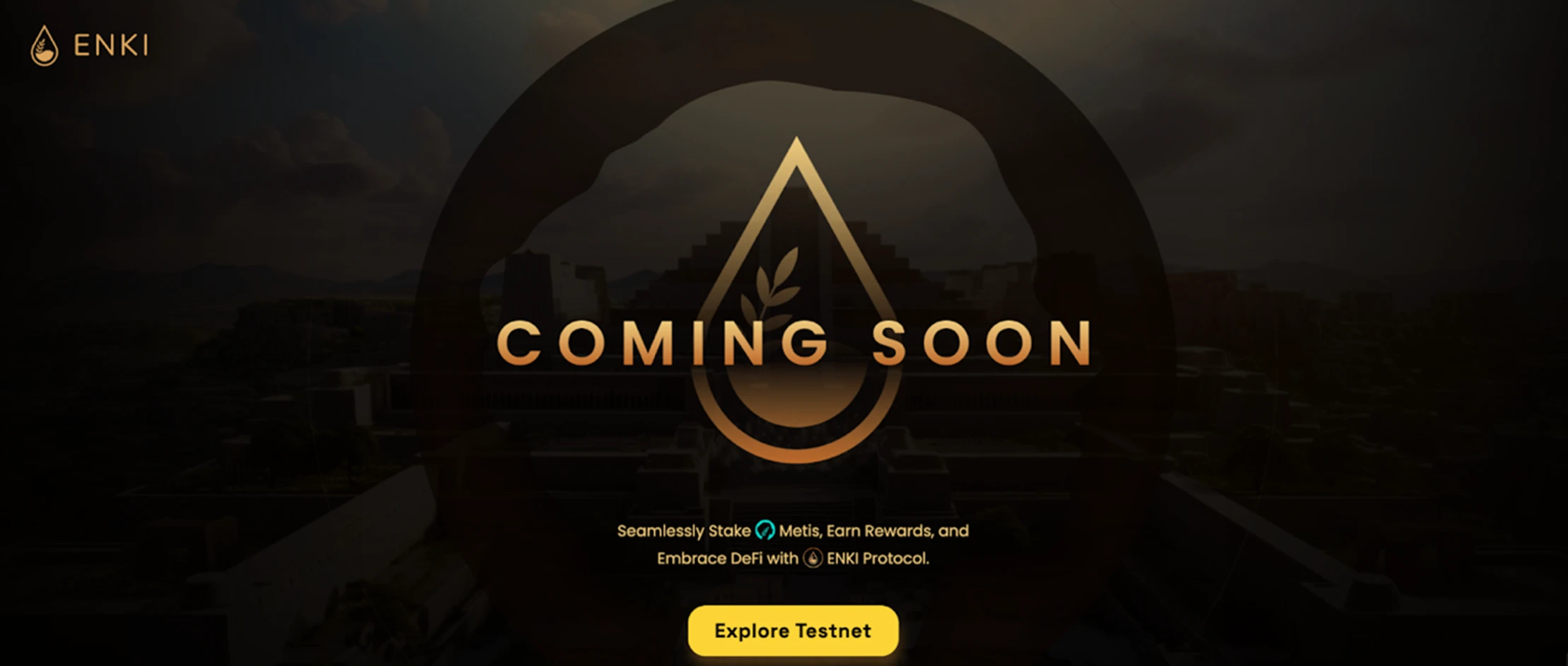
2.1.1 Basic Introduction
ENKI is the first LSD project deployed on Metis, aiming to simplify participation in Metis Sequencer Node Staking. It allows users to earn rewards without the technical complexity of running a Sequencer node themselves. ENKI can be seen as a bridge that connects ordinary users to the Metis Sequencer Node and allows them to earn multiple rewards.
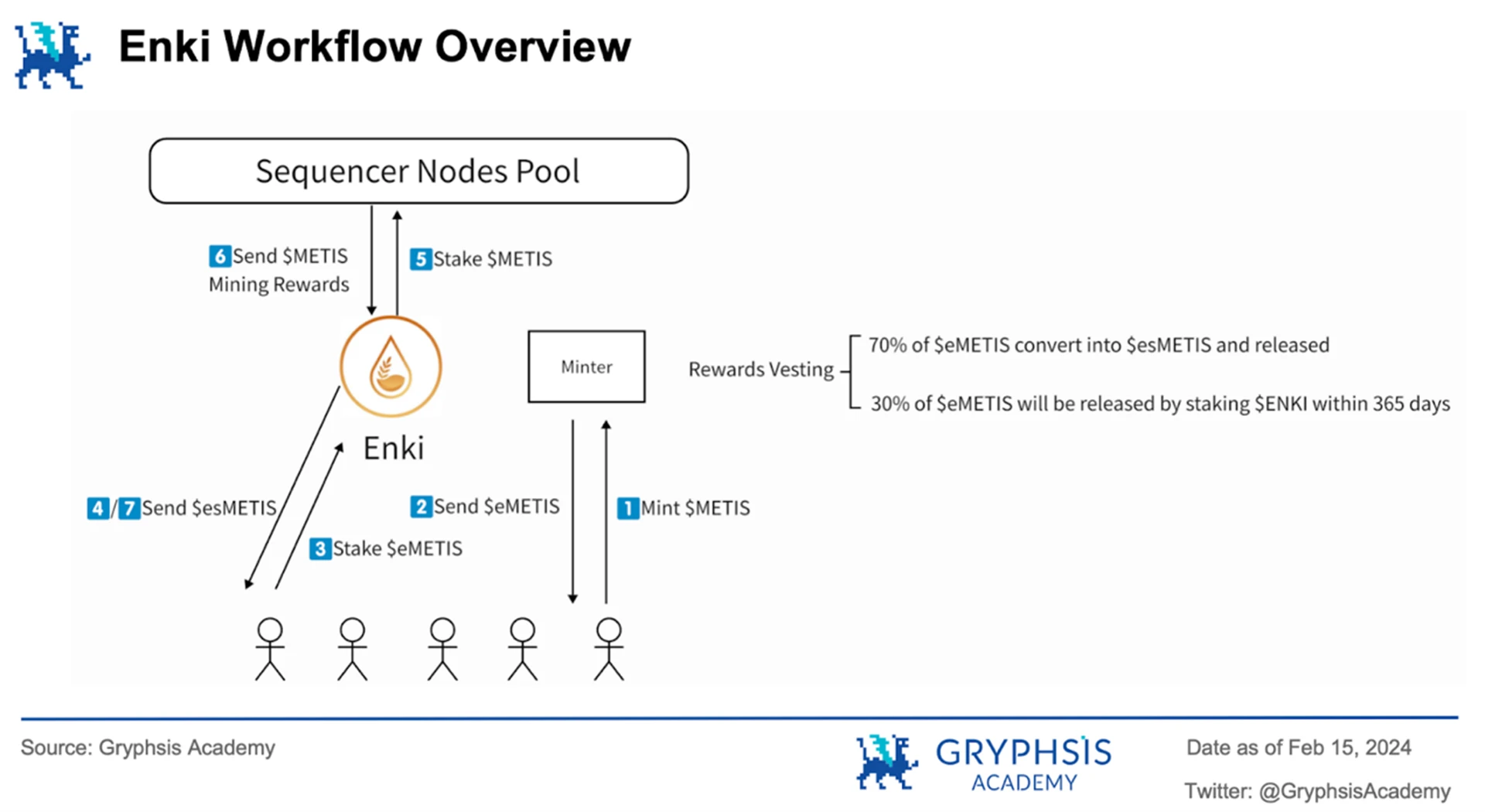
The workflow is as follows:
Step 1: Convert to $eMETIS. Users convert their held $METIS into $eMETIS in Enki (through Minter).
Step 2: Stake $eMETIS to obtain $seMETIS as proof of active participation in the reward process.
Step 3: Accumulate rewards. The held $seMETIS accumulates rewards over time, reflecting the performance of the Metis Sequencer Node ecosystem.
Step 4: Earn rewards. Rewards are distributed every 7 days, with 70% of $eMETIS earnings being immediately converted into $seMETIS, and the remaining 30% entering a vesting period. Users need to stake $ENKI to unlock this portion of earnings within a year.
Step 5: Claim rewards. Users can convert $seMETIS to $eMETIS in ENKI and then convert $eMETIS to $METIS in secondary markets such as Netswap.
Even users holding a small amount of $METIS can participate in staking, eliminating the need for technical knowledge and a large initial setup, providing more users with the opportunity to participate in staking and earn rewards.
2.1.2 Token Economics
1) Allocation Mechanism
The native token of the ENKI protocol is $ENKI, with an expected total supply of 10 million. Holding $ENKI tokens not only allows for staking but also potentially grants governance rights and other benefits within the ecosystem.
The initial allocation plan for $ENKI is as follows:
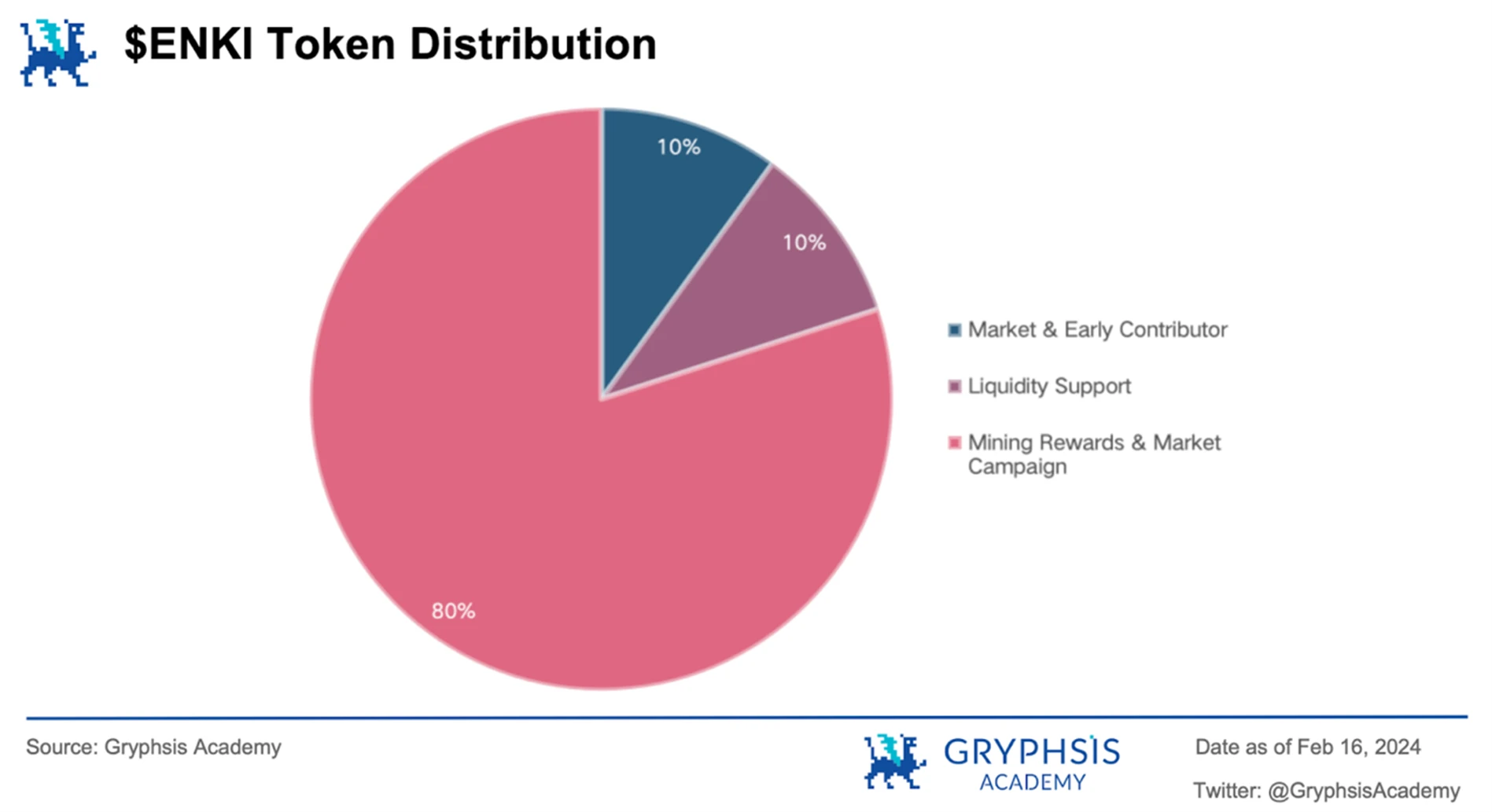
Market, partner, and early community supporter: 10% of the total, i.e., 1 million $ENKI.
Protocol liquidity support: 10% of the total, i.e., 1 million $ENKI, added in batches based on market demand and protocol income.
Future mining incentives and some market activities: 80% of the total, i.e., 8 million $ENKI, released gradually through various forms.
The ENKI team itself does not hold any token allocation shares, does not conduct fundraising, and all token releases in all stages are conducted through Fair Launch.
2) Dual Token Model
$eMETIS: A token similar to a stablecoin, pegged 1:1 to $METIS, and converted by the Minter in ENKI, making it convenient for users to participate in the ENKI system. It serves as a ticket to enter the world of Metis Sequencer Node Staking.
$esMETIS: Represents the staked $eMetis, providing users with effective proof of staking $eMetis and earning additional staking rewards. It also has liquidity and can interact with other Defi ecosystems.
3) Value Capture
Governance rights: Holders are an important part of the decentralized governance model. Most of the $ENKI tokens will be used as mining incentives, and holders can vote to influence incentive content, fee structures, protocol upgrades, and the overall development of the ecosystem.
Unlocking rights: As mentioned above, 30% of the mining incentives in the ENKI protocol require users to lock $ENKI to unlock them within 365 days.
The staking of $ENKI tokens is crucial for the staking process, as it is a requirement for $esMETIS holders to earn a portion of the $eMetis rewards. This locking mechanism, combined with $ENKI tokens, encourages continuous user participation and investment in the ecosystem, successfully binding incentives to the long-term development of ENKI.
2.1.3 Recent Developments
Currently, ENKI is deployed on the Metis Sepolia Testnet and is participating in the second phase of community testing for decentralized sequencers on Metis.
On January 16, Metis officially launched Community Testing on the Sepolia testnet, allowing users to test the POS Sequencer pool by exploring various Dapps and earn corresponding Testing Points rewards. Each Dapp corresponds to a different points pool, and each operation has a different points ratio. Participants can earn testing network $METIS at zero cost through network faucets and earn points.
In Season 1, participating ecological projects included Hummus Exchange, League.Tech, Tethys Finance, Midas Games, and Netswap. In the current Season 2, only ENKI is included.
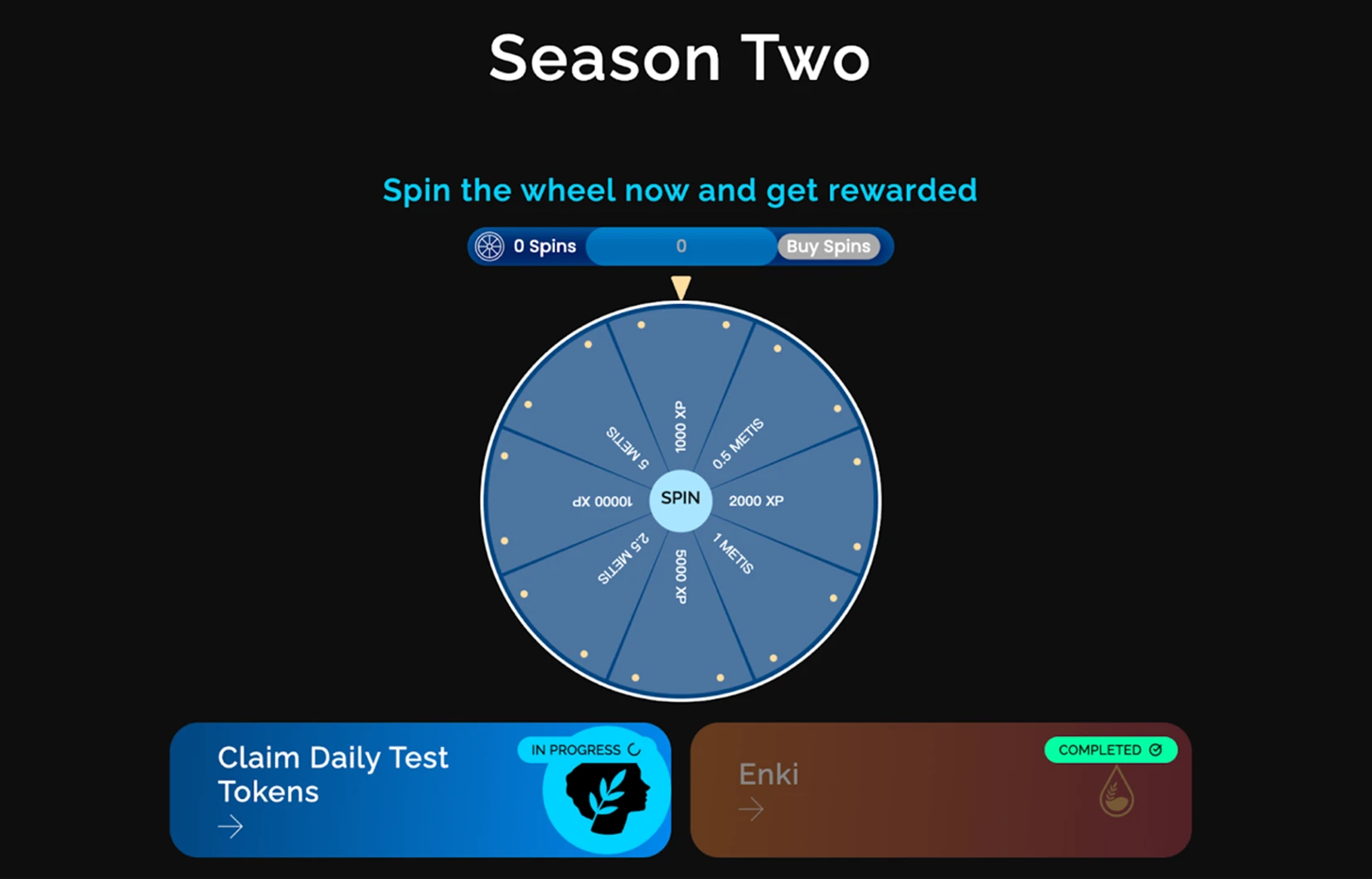
Source: https://decentralize.metis.io/#szn2
By claiming test $METIS, users can Mint&Stake on the ENKI website to earn points. They can also claim test $ENKI tokens for staking and earn rewards.
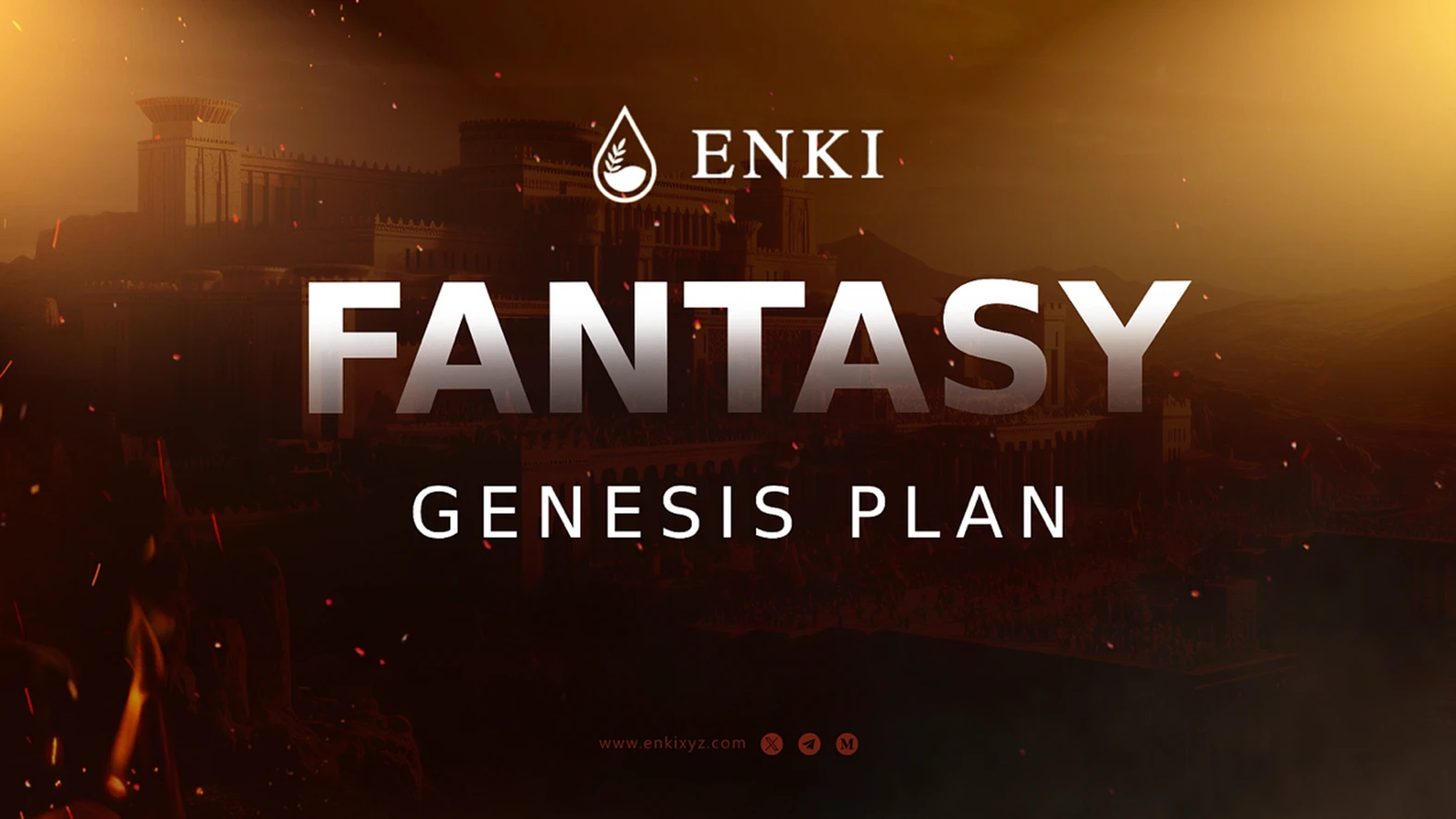
Source: Medium
On February 8, the official ENKI Fantasy Genesis plan was launched, releasing 10% (1M) of $ENKI tokens in stages as incentives.
The entire activity will be divided into two phases:
Phase 1 - Pre-launch
Community participation and Trivia tasks: Allocation of 25,000 $ENKI (0.25% of the total).
Participation in testnet activities: Allocation of 25,000 $ENKI (0.25% of the total).
Testnet Bug Bounty and marketing cooperation: Allocation of 100,000 $ENKI (1% of the total).
Ecological partner airdrop: Allocation of 100,000 $ENKI (1% of the total), aimed at rewarding loyal users in the Metis ecological partner community.
All users participating in the above activities will be eligible to mint an early supporter NFT on the Metis mainnet after the first phase, which will serve as proof for claiming airdrops later.
Phase 2 - Post-launch on Metis Mainnet
Metis staking airdrop: Allocation of 200,000 $ENKI (2% of the total) for users staking Metis in the ENKI protocol, distributed based on staking ratios.
Invitation staking activity: Allocation of 400,000 $ENKI (4% of the total).
Users holding $eMetis or $seMetis are eligible to participate in this activity. They will be able to mint a special inviter NFT and receive a unique invitation code. Users staking with this invitation code will earn airdrop points for the inviter's NFT, provided each invitee contributes at least 0.1 $METIS to the staking pool to help the inviter earn points.
The points calculation rule is as follows: Points = 100 * total number of invitees + 200 * total staked amount by invitees. After the activity ends, airdropped tokens will be distributed based on the proportion of airdrop points. The inviter NFT will also serve as proof for claiming airdrops.
ENKI liquidity incentives: Allocation of 150,000 $ENKI (1.5% of the total).
ENKI is the most important step for Metis to achieve decentralized sequencers, lowering the staking threshold to reach ordinary users and benefit individual investors, allowing the entire community to participate in network construction and enjoy returns.
2.2 Artemis
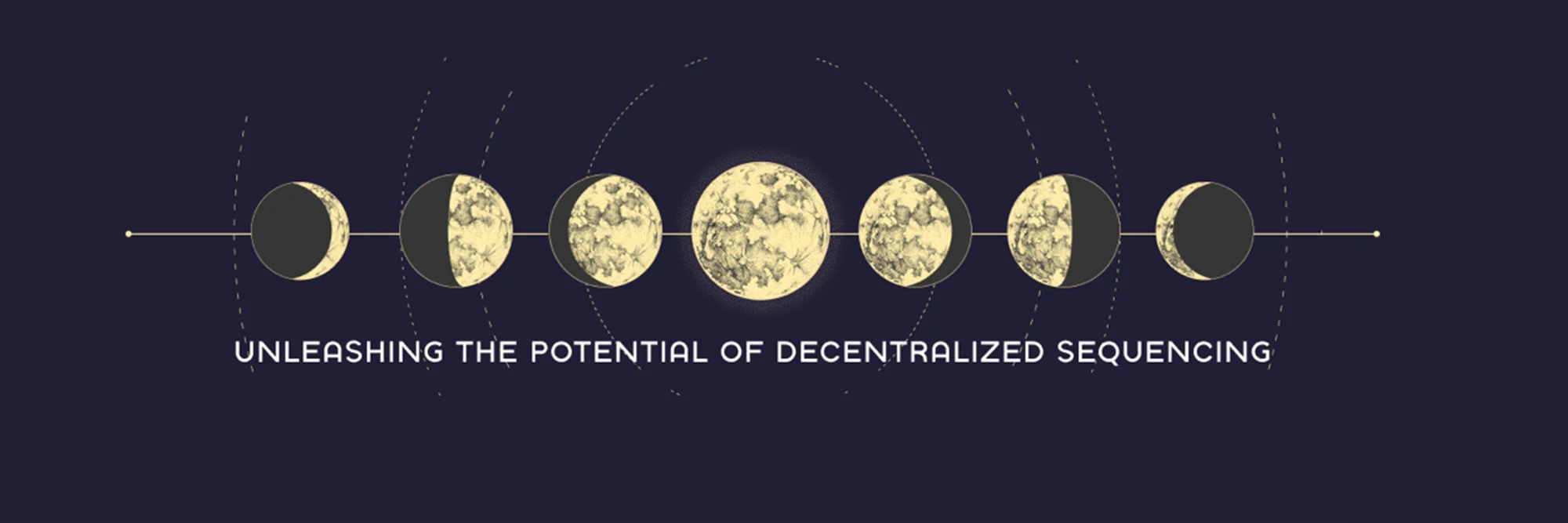
2.2.1 Basic Introduction
Artemis Finance is a liquidity staking protocol designed for the Metis decentralized sequencer pool. Users can stake their $METIS tokens on Artemis and receive the liquidity token $artMETIS, automatically accumulating earnings and interacting with the Metis chain using $artMETIS.
2.2.2 Token Economics
1) Allocation Mechanism
The native token of the Artemis protocol is $ART, with a total supply of 100M. The initial allocation plan is as follows:
Airdrop (10%, 10M): For early activity participants such as $METIS stakers, liquidity providers, and ecological partners.
Treasury (52%, 52M): The treasury funds are mainly used for initial liquidity provision, incentives for using $artMETIS, market cooperation proposals, and more.
NGDAO/Advisors (18%, 18M): Locked in the DAO, with the team not holding any shares.
IDO (20%, 20M): Sold through Fair Launch.
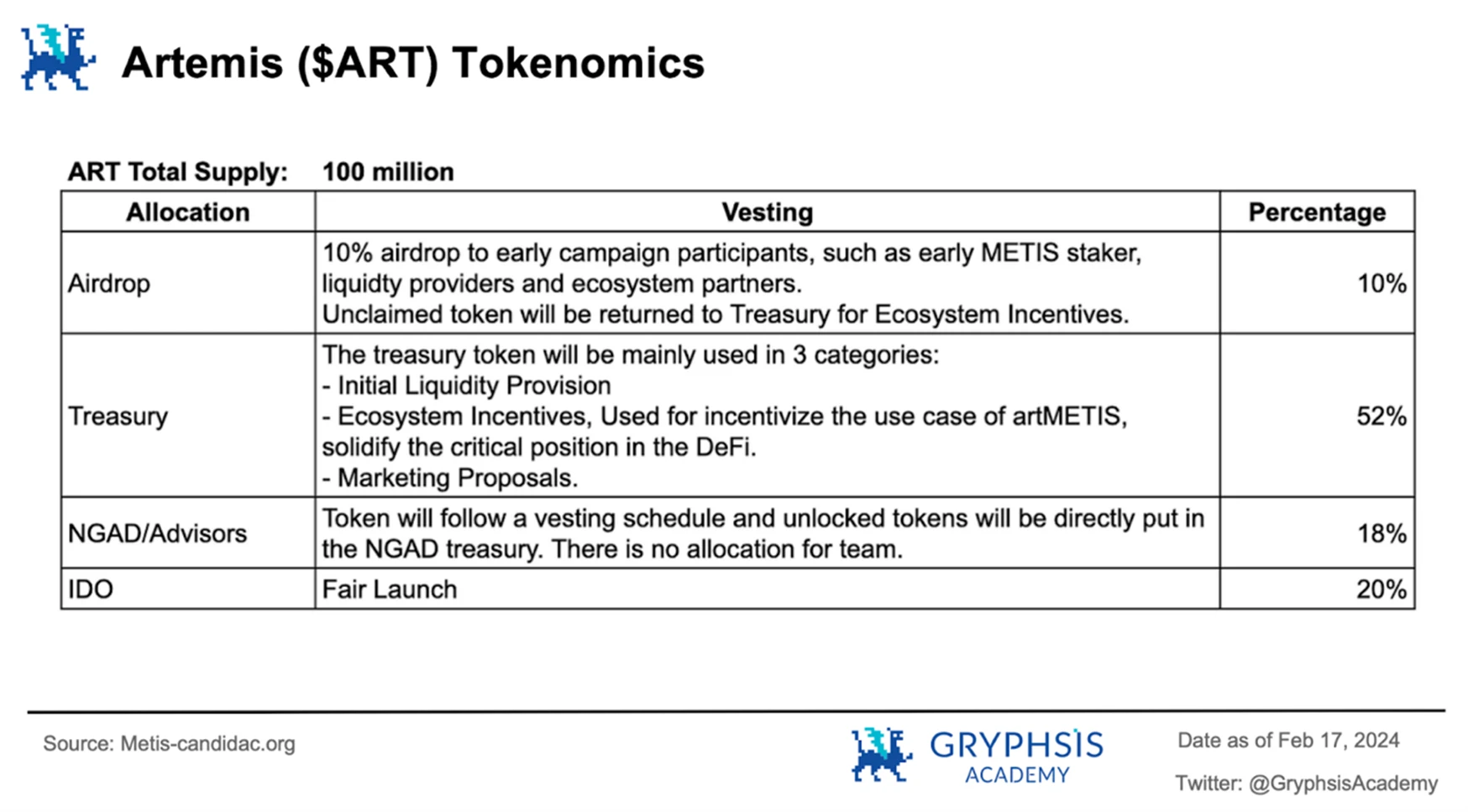
2) Value Capture
Artemis allocates 10% of its tokens to early participants such as $METIS stakers, allowing $METIS staking to earn multiple rewards, similar to the role of a golden shovel, enjoying incentives from other projects in the ecosystem, further stimulating staking incentives. In addition, another portion of the allocation is used to expand the use cases of $artMETIS, which can enhance the utility and application scenarios of the assets.
The benefits that $ART holders can enjoy are currently undisclosed.
Artemis is expected to launch a series of activities, including collaborations with DeFi projects, liquidity providers, and yield optimization platforms, to increase liquidity and expand the use cases of $artMETIS:
Launching $artMETIS/$METIS pools on DEXes and providing liquidity mining incentives;
Listing $artMETIS on Pendle and enabling yield trading;
Designating $artMETIS as eligible collateral for lending protocols.
The goal is to attract more participants to stake $METIS while allowing users to use $artMETIS in a diverse DeFi ecosystem and earn returns. Similar to ENKI, Artemis provides $METIS holders with a simplified opportunity to participate in decentralized sequencers and earn profits.
3. Conclusion
We can foresee the positive cycle brought about by the vigorous development of the LSD protocol by Metis: the LSD protocol lowers the staking threshold and allows ordinary users to enjoy multiple rewards, incentivizing more users to participate in staking; the staking rate of $METIS increases, promoting the decentralized implementation of the network, sharing traditional Layer 2 MEV income with the community, reducing user costs, and maintaining user returns; forming unique network characteristics to attract more users to participate in the network.
As $METIS is a utility token for network usage, the increase in network usage will bring more consumption demand, leading to token appreciation; and LSD, as the fastest and highest-yielding investment method for token holders, will attract more users to participate; the rich user traffic will stimulate more derivative tracks such as LSDfi, Re-Staking, and others, allowing assets to generate returns while enjoying liquidity, thereby activating the entire DeFi ecosystem.
References
[1]https://medium.com/@ENKIProtocol/understanding-enki-an-essential-faq-before-testnet-launch-57ab3f2e6a22
[2]https://pro.nansen.ai/eth2-deposit-contract
[3]https://medium.com/@GryphsisAcademy/diving-into-lsd-the-growth-potential-and-strategic-opportunities-bcea5c10cdc6
【Disclaimer】This report is an original work completed by @auggestcrypto, a student of @GryphsisAcademy, under the guidance of @CryptoScottETH. The author is solely responsible for all content, which may not necessarily reflect the views of Gryphsis Academy or the organization commissioning the report. Editorial content and decisions are not influenced by readers. Please note that the author may own the cryptocurrencies mentioned in this report. This document is for informational purposes only and should not be used as the basis for investment decisions. It is strongly recommended that you conduct your own research and consult with independent financial, tax, or legal advisors before making investment decisions. Please remember that past performance of any asset is not a guarantee of future returns.
免责声明:本文章仅代表作者个人观点,不代表本平台的立场和观点。本文章仅供信息分享,不构成对任何人的任何投资建议。用户与作者之间的任何争议,与本平台无关。如网页中刊载的文章或图片涉及侵权,请提供相关的权利证明和身份证明发送邮件到support@aicoin.com,本平台相关工作人员将会进行核查。



